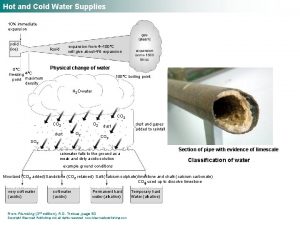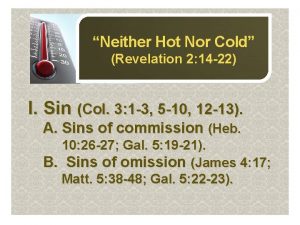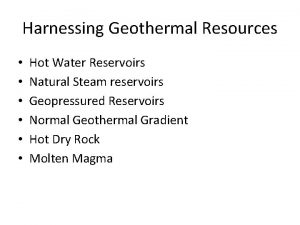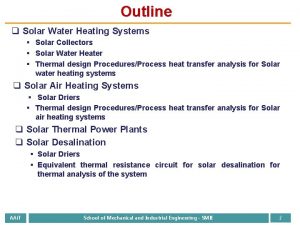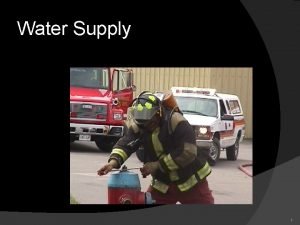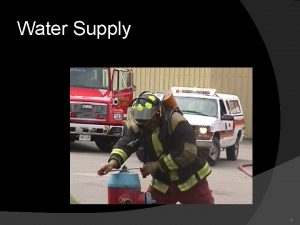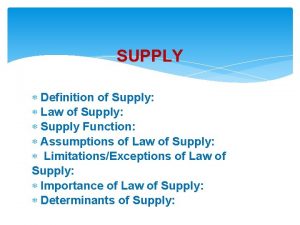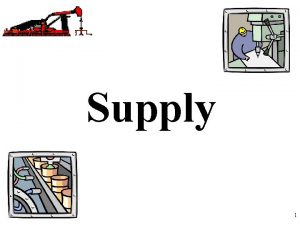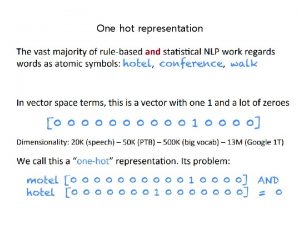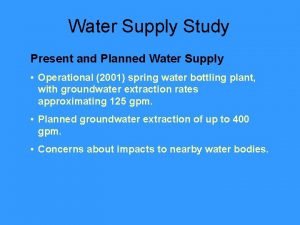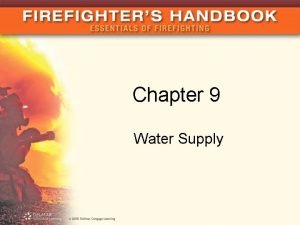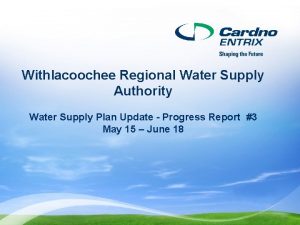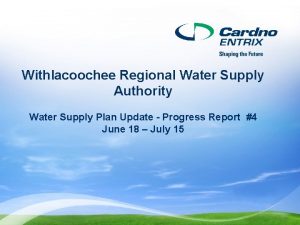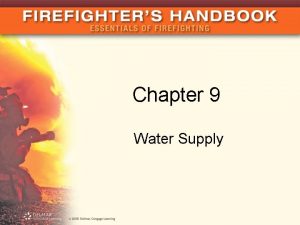GR 10 Hot water supply Gr 10 Questions














- Slides: 14

GR 10

Hot water supply Gr 10 Questions 1. When installing hot water pipes, what must you take into consideration? 2. What is the cause of air bubbles in hot water pipes?

Questions 3. Complete the hot- and cold water distribution in the figure below.

Questions 4. What is the purpose of the following valves? Pressure control valve Vacuum breaker Safety valve 5. Name three ways how heat can be transferred.

Questions 6. Make neat drawings to explain the difference between high- and low pressure systems.

Answers 1. When installing hot water pipes, what must you take into consideration? Use the shortest most direct route The pipe can change direction if necessary Valves are installed where they can be easily reached Bents and joints can be replaced when needed Compression joints are used, since they are easy to repair or replace SANS approved material must be used.

Answers 2. What is the cause of air bubbles in hot water pipes? Air bubbles are readily formed in hot water systems. This occurs more frequently when household systems have been incorrectly installed and where gravity systems are used. It also occurs when pressure in high pressure geysers is too low to force out the air bubble, which is then lodged in the highest part of the hot water system. It can also happen when a new geyser is installed.

Answers 3. Complete the hot- and cold water distribution in the figure below.

Answers 4. What is the purpose of the following valves? Pressure control valve The prime function of the pressure control valve is to reduce the incoming water supply with too high pressure to an acceptable pressure. The second function is to forward a constant downstream pressure into the installation. Pressure control valves are designed to ensure unaffected pressure changes in the water installation.

Answers Vacuum breaker: A vacuum breaker must be installed at least 300 mm above the highest inflow of water into the system. The vacuum breaker is designed to automatically open if the water pressure in the system drops below atmospheric pressure therefor preventing a negative system pressure. It serves to: Protect the cylinder from vacuum collapse Vents the system when draining for maintenance Prevents back siphoning damage to the cylinder

Answers Safety valve: The name explain the purpose. The function of the safety valve is to open and release the inside pressure by discharging some of the hot water or steam. The safety valve function refers to the last resort when: The pressure control valve fails. When the water in the geyser becomes hotter than what the geyser can handle (Creates enormous pressure inside the geyser)

Answers 5. Name three ways how heat can be transferred. Radiation Conduction Convection

Answers 6. Make neat drawings to explain the difference between high- and low pressure systems. High pressure

Answers Low pressure
 Water and water and water water
Water and water and water water Indirect water supply system
Indirect water supply system Cold water supply system
Cold water supply system White hot vs red hot temperature
White hot vs red hot temperature Hot working of metal is
Hot working of metal is Perbedaan hot lava dan hot lava volcano
Perbedaan hot lava dan hot lava volcano Hot nor
Hot nor Chapter 5 section 1 supply
Chapter 5 section 1 supply Ratio ng elastisidad
Ratio ng elastisidad Matching supply with demand
Matching supply with demand Natural steam reservoirs
Natural steam reservoirs Earth save products
Earth save products Solar heat exchanger
Solar heat exchanger Veins are often formed from hot water solutions
Veins are often formed from hot water solutions Magnesium in cold water
Magnesium in cold water


